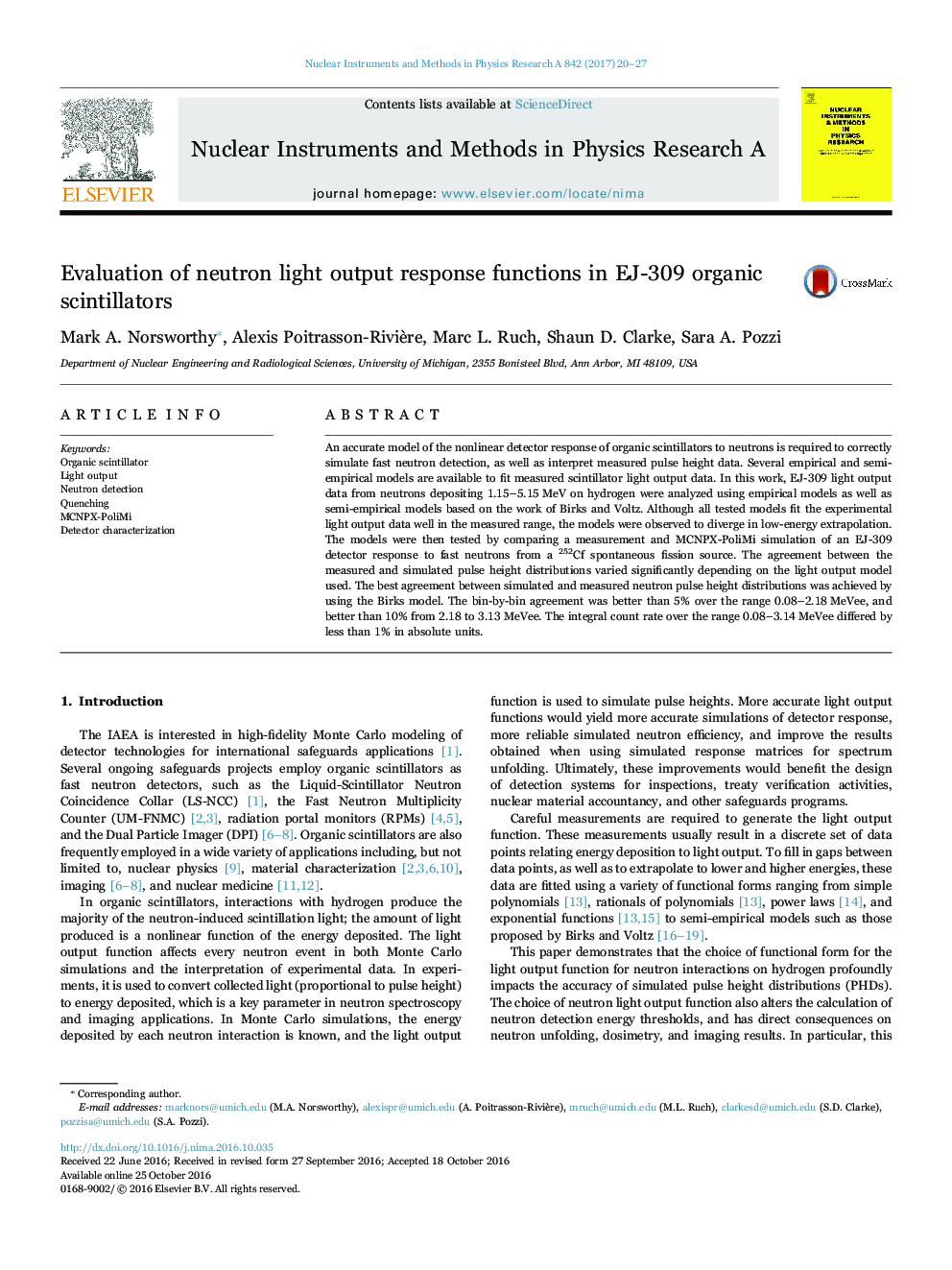| Article ID | Journal | Published Year | Pages | File Type |
|---|---|---|---|---|
| 5493217 | Nuclear Instruments and Methods in Physics Research Section A: Accelerators, Spectrometers, Detectors and Associated Equipment | 2017 | 8 Pages |
Abstract
An accurate model of the nonlinear detector response of organic scintillators to neutrons is required to correctly simulate fast neutron detection, as well as interpret measured pulse height data. Several empirical and semi-empirical models are available to fit measured scintillator light output data. In this work, EJ-309 light output data from neutrons depositing 1.15-5.15Â MeV on hydrogen were analyzed using empirical models as well as semi-empirical models based on the work of Birks and Voltz. Although all tested models fit the experimental light output data well in the measured range, the models were observed to diverge in low-energy extrapolation. The models were then tested by comparing a measurement and MCNPX-PoliMi simulation of an EJ-309 detector response to fast neutrons from a 252Cf spontaneous fission source. The agreement between the measured and simulated pulse height distributions varied significantly depending on the light output model used. The best agreement between simulated and measured neutron pulse height distributions was achieved by using the Birks model. The bin-by-bin agreement was better than 5% over the range 0.08-2.18Â MeVee, and better than 10% from 2.18 to 3.13Â MeVee. The integral count rate over the range 0.08-3.14Â MeVee differed by less than 1% in absolute units.
Keywords
Related Topics
Physical Sciences and Engineering
Physics and Astronomy
Instrumentation
Authors
Mark A. Norsworthy, Alexis Poitrasson-Rivière, Marc L. Ruch, Shaun D. Clarke, Sara A. Pozzi,
